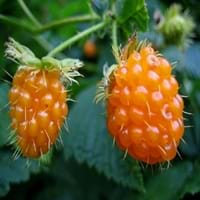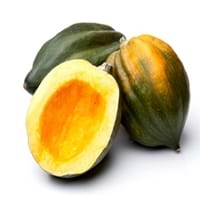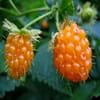Health Benefits
Cancer prevention, Improves stomach health, Weight loss properties
Anti-inflammatory properties, Arthritis treatment, Regulates Blood Sugar
General Benefits
Anti oxidant properties, Digestive aid, Eye care, Healing of wounds, Improves eye vision, Maintains healthy cholesterol level, Strengthens bones
Boosts immune system, Controls blood sugar levels, Digestive aid
Skin Benefits
Anti-aging benefits, Reduces wrinkles
Nourishes skin, Protects skin from oxidative stress
Hair Benefits
Protects hair, Regulates hair growth
Prevents hair loss, Promotes longer and healthier hair, Regulates hair growth
Allergy Symptoms
Abdominal pains, Itching, Swelling of mouth, tongue or lips
Asthma, Red rash, Swelling of mouth, tongue or lips
Side Effects
Allergic reaction
Diarrhoea, Vomiting
Best Time to Eat
Best if taken as a breakfast (or empty stomach), As a snack in the late afternoon, Don't eat after meal, Morning time (before lunch)
Along with meal, As a snack in the late afternoon, Don't eat after meal, Eat the fresh ones, avoid mixing with any other foods, don't eat after meal.
Vitamin B5 (Pantothenic Acid)
Vitamin C (Ascorbic Acid)
Vitamin E (Tocopherole)
Not Available
Vitamin K (Phyllochinone)
Not Available
Calories in Fresh Fruit with Peel
Calories in Fresh Fruit without Peel
Not Available
Not Available
Calories in Frozen Form
Not Available
Calories in Dried Form
Not Available
Calories in Canned Form
Not Available
Season
All seasons
Winter
Varieties
Golden ruby and Olympic Double
Bush Table Queen, Heirloom Table Queen, Festival Hybrid, Early Acorn Hybrid, Table Ace, Ebony and Cream of the Crop
Color
Pink, Pink red, Salmon, Salmon yellow
Dark green, Green-yellow, Orange green
Origin
North America
Central America, North America, Unknown
Soil Type
Loam
Well-drained
Climatic Conditions
Moist
Cold, Sunny
Facts about
- The name salmon berry is due of the resemblance with 'salmon roe'.
- In 1 kg of fruit, there are total 315,250 seeds.
- Salmon berry tree leaves act as an excellent replacement for tea.
- It was named as Acorn Squash for its resemblance to a large ribbed acorn.
- It is said that squash was being grown in Mexico as long as 10,000 years ago.
- It was the first food cultivated by native American Indians.
Spirits
Not Available
Yes
Cocktails
Not Available
Yes
Top Producer
United States of America
China
Other Countries
Canada, Mexico
Egypt, India, Iran, Italy, Mexico, Russia, Turkey, Ukraine, United States of America
Top Importer
Not Available
Costa Rica
Top Exporter
Not Available
United States of America
Botanical Name
Rubus spectabilis
Cucurbita Pepo
Synonym
Not Available
Winter Squash
Subkingdom
Tracheobionta
Tracheobionta
Division
Magnoliophyta
Magnoliophyta
Class
Magnoliopsida
Magnoliopsida
Subclass
Rosidae
Dillenhidae
Order
Rosales
Cucurbitales
Family
Rosaceae
Cucurbitaceae
Species
R. spectabilis
Pepo
Generic Group
Not Available
Not Available
Difference Between Salmonberry and Acorn squash
We might think that Salmonberry and Acorn squash are similar with respect to nutritional value and health benefits. But the nutrient content of both fruits is different. Salmonberry and Acorn squash Facts such as their taste, shape, color, and size are also distinct. The difference between Salmonberry and Acorn squash is explained here.
The amount of calories in 100 gm of fresh Salmonberry and Acorn squash with peel is 47.00 kcal and 40.00 kcal and the amount of calories without peel is Not Available and Not Available respectively. Thus, Salmonberry and Acorn squash belong to Low Calorie Fruits and Low Calorie Fruits category.These fruits might or might not differ with respect to their scientific classification. The order of Salmonberry and Acorn squash is Rosales and Cucurbitales respectively. Salmonberry belongs to Rosaceae family and Acorn squash belongs to Cucurbitaceae family. Salmonberry belongs to Rubus genus of R. spectabilis species and Acorn squash belongs to Cucurbita genus of Pepo species. Beings plants, both fruits belong to Plantae Kingdom.









